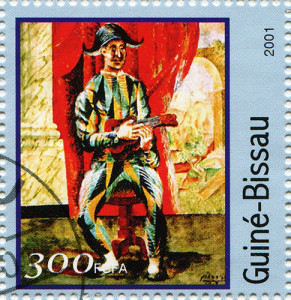Highly creative artists do their work in a world of unpredictability. They don’t force a clear picture of the end result. While they may set restrictions and principles, they don’t create such strong boundaries that limit flow or their ability to move in new, more inspired directions. They trust themselves and the artistic process.
The artist never entirely knows. We guess.
We may be wrong, but we take leap after leap in the dark.
~ Agnes de Mille

Although Agnes de Mille experienced a rather uncertain journey through the 20th century American theater and ballet world, she ultimately developed a long and successful career blending classical and modern dance. Her willingness to trust herself and “take a leap in the dark” led her to a make significant contributions to dance and the American theater. She made innovative use of natural motions and nonclassical folk dance forms like tap and square dancing in her choreography that contributed significantly to the development of the narrative aspect of dance in ballet and theater.
In 1943, de Mille’s choreography of the dances for Oklahoma! not only added to the dramatic atmosphere of the work but also, for the first time in American theatrical history, was instrumental in advancing the plot. The entire musical theater concept of dream ballet is thought to have originated in her choreography for the 18-minute first-act finale. Listen to Agnes de Mille talk about the Oklahoma! dream ballet in this enjoyable 15-minute video.
You don’t make art, you find it.
~Pablo Picasso

Pablo Picasso was a significant 20th century artist whose art form was not only ahead of the time, but the works he created still influence artists today. So much of his art depended on his ability to trust his intuition, not knowing what might or could come next. He said, “All children are artists. The problem is how to remain an artist once he grows up.” Children play with abandon. There are no constraints or limits. He tried things he couldn’t do in order to learn how to do them. His originality came from this sense of abandon, literally the “leap in the dark” that Agnes de Mille speaks of in her quote above.
Don’t think about making art, just get it done. Let everyone else decide if it’s good or bad, whether they love it or hate it. While they are deciding, make even more art.
~Andy Warhol
Many great artists create their works with this kind of leap. We can learn much from these artists and the artistic process to create experiences every day and practice living our lives as art. Here are a few things to try:
[sws_checklist]
- Like Picasso, strive to learn things you can’t already do.
- Trust yourself, avoiding the inclination to work or live for the approval of other people.
- Learn to listen. Really listen.
- Be understanding toward yourself when you make a mistake.
- Make decisions and care enough to make a difference.
- Discover the beauty of silence and incorporate it into your daily experiences.
[/sws_checklist]
In order for this artistic process to work, it’s important to understand that it isn’t possible to create great art without a sincere desire and concerted effort. If you trust yourself, you can step into the world of unpredictability without a clear picture of the outcome. In fact, you learn that you can be more creative when you discover it as you go. Take an interest in living your life as an art form. This kind of creativity is needed in today’s world more than ever before.
— Pat
Sign-up for the Arts Awareness eNewsletter and receive a free gift “Three Lessons to Begin to Make Artistic Principles Work for You in Fascinating Ways.” Like Arts Awareness on facebook.
